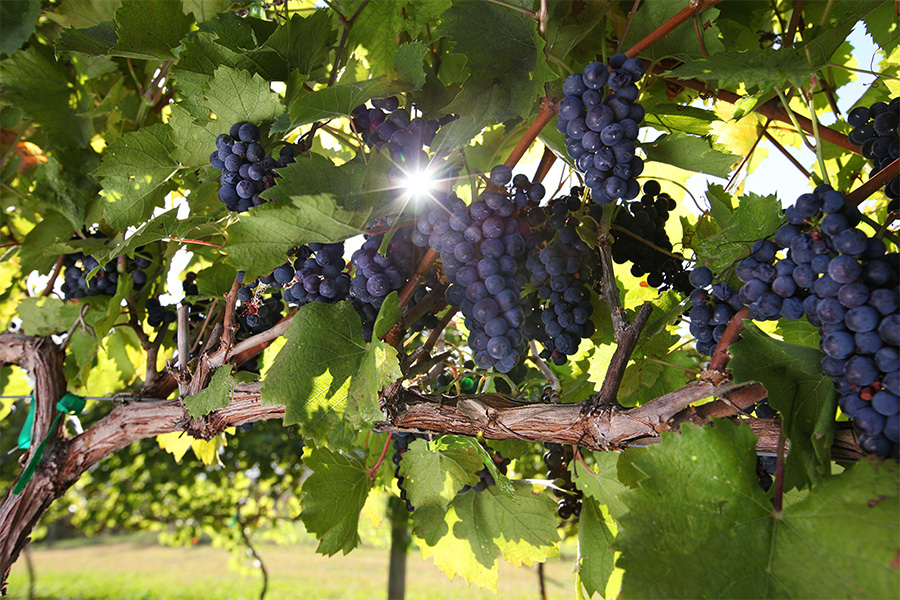-
 Pierce’s disease (PD) may be the greatest threat to the growth and sustainability of wine grape industries in the Southeastern U.S. The first step to managing grapevine PD is understanding the threat of PD as dictated by the region in which vines will be planted. It is highly advised that…
Pierce’s disease (PD) may be the greatest threat to the growth and sustainability of wine grape industries in the Southeastern U.S. The first step to managing grapevine PD is understanding the threat of PD as dictated by the region in which vines will be planted. It is highly advised that…|
-
 Granulate ambrosia beetle, Xylosandrus crassiusculus (Mot.), is a serious pest of woody trees and shrubs in Georgia. The insect was previously known as the Asian ambrosia beetle. These tiny beetles were first detected in South Carolina in the 1970s and have spread across the Eastern U.S. Woody ornamental nursery plants…
Granulate ambrosia beetle, Xylosandrus crassiusculus (Mot.), is a serious pest of woody trees and shrubs in Georgia. The insect was previously known as the Asian ambrosia beetle. These tiny beetles were first detected in South Carolina in the 1970s and have spread across the Eastern U.S. Woody ornamental nursery plants…|
-
 The rhodesgrass mealybug, Antonina graminis, is an invasive insect native to Asia. First found in the U.S. in Texas in 1942, the rhodesgrass mealybug has since spread to all states on the Gulf of Mexico as well as Georgia, South Carolina, New Mexico, Arizona, and California. Rhodesgrass mealybugs can infest…
The rhodesgrass mealybug, Antonina graminis, is an invasive insect native to Asia. First found in the U.S. in Texas in 1942, the rhodesgrass mealybug has since spread to all states on the Gulf of Mexico as well as Georgia, South Carolina, New Mexico, Arizona, and California. Rhodesgrass mealybugs can infest…|
-
 Thrips are tiny, cigar-shaped insects belonging to the order Thysanoptera, whose name refers to the fringed wings of insects in this order. About 5000 species of thrips are known, and many cause damage to cultivated plants by feeding or vectoring plant diseases. Some thrips are predatory. It is usually difficult…
Thrips are tiny, cigar-shaped insects belonging to the order Thysanoptera, whose name refers to the fringed wings of insects in this order. About 5000 species of thrips are known, and many cause damage to cultivated plants by feeding or vectoring plant diseases. Some thrips are predatory. It is usually difficult…|
-
 The two-lined spittlebug is an important insect pest of turfgrass in Georgia. It attacks all turfgrass species, but centipedegrass is the most susceptible to spittlebug infestation. It also attacks some ornamental plants, including asters, hollies, and morning glories. The two-lined spittlebug injects toxins into the turfgrass, and the affected grass…
The two-lined spittlebug is an important insect pest of turfgrass in Georgia. It attacks all turfgrass species, but centipedegrass is the most susceptible to spittlebug infestation. It also attacks some ornamental plants, including asters, hollies, and morning glories. The two-lined spittlebug injects toxins into the turfgrass, and the affected grass…|
-
 This bulletin provides information for producers, nutritionists, and feed industry personnel on formulating diets to maintain or improve milk composition. The value of milk components is increasing more than skim milk, so this topic impacts all dairy farmers. The publication provides information on feeding dairy cows for improved yield of…
This bulletin provides information for producers, nutritionists, and feed industry personnel on formulating diets to maintain or improve milk composition. The value of milk components is increasing more than skim milk, so this topic impacts all dairy farmers. The publication provides information on feeding dairy cows for improved yield of…|
-
 Antibiotic therapy continues to play an important role in the control of mastitis in dairy cows. Lactational therapy is effective against Streptococcus agalactiae but less successful against infections caused by Staphylococcus aureus and other causes of mastitis. As a result, alternative treatment strategies have been developed, including a combination of…
Antibiotic therapy continues to play an important role in the control of mastitis in dairy cows. Lactational therapy is effective against Streptococcus agalactiae but less successful against infections caused by Staphylococcus aureus and other causes of mastitis. As a result, alternative treatment strategies have been developed, including a combination of…|
-
 Johnsongrass (Sorghum halepense) is a warm-season perennial weed in pastures and roadsides throughout central and northern Georgia. Populations may germinate from seed in spring after overwintering in the soil. However, Johnsongrass primarily emerges from dormant rhizomes in areas with a history of infestations. Rhizomes are belowground stems that produce daughter…
Johnsongrass (Sorghum halepense) is a warm-season perennial weed in pastures and roadsides throughout central and northern Georgia. Populations may germinate from seed in spring after overwintering in the soil. However, Johnsongrass primarily emerges from dormant rhizomes in areas with a history of infestations. Rhizomes are belowground stems that produce daughter…|